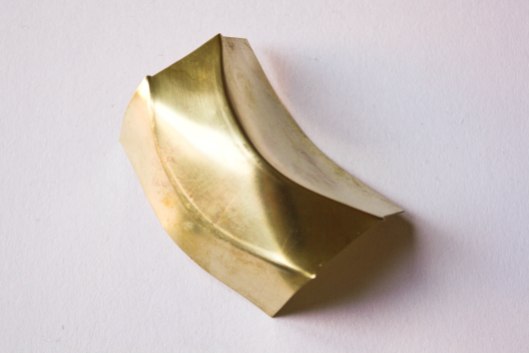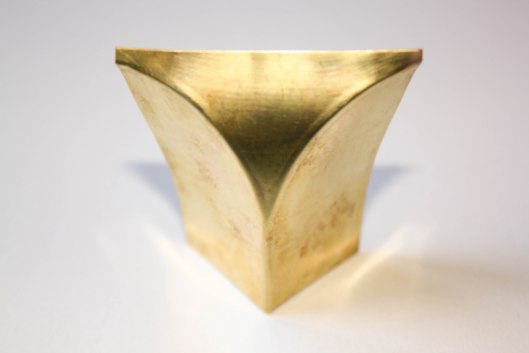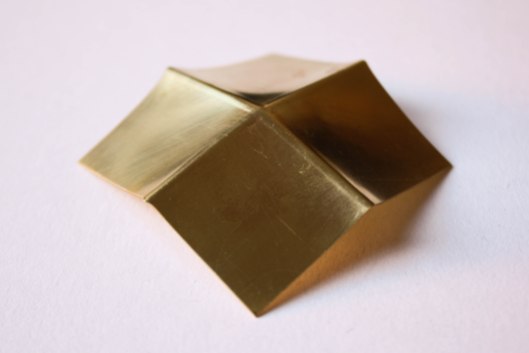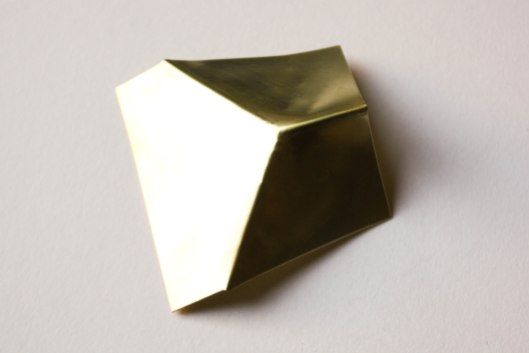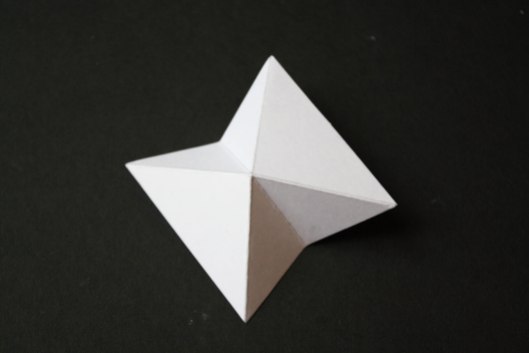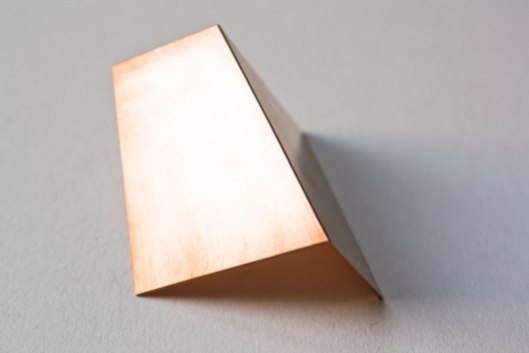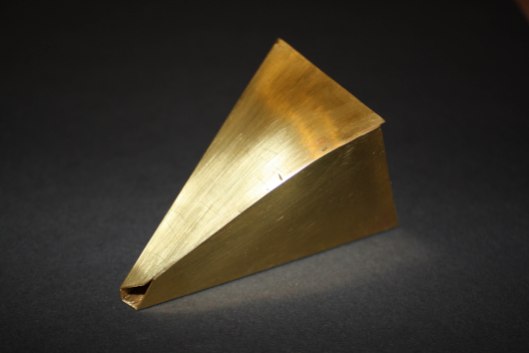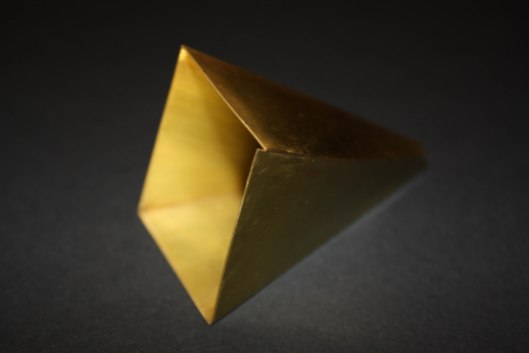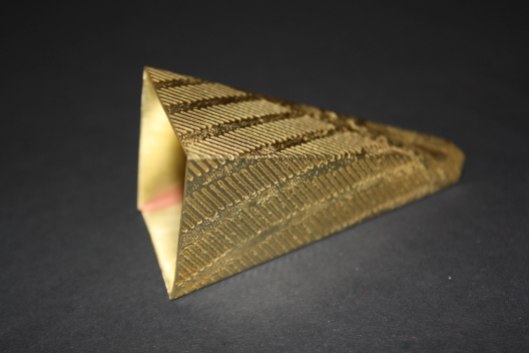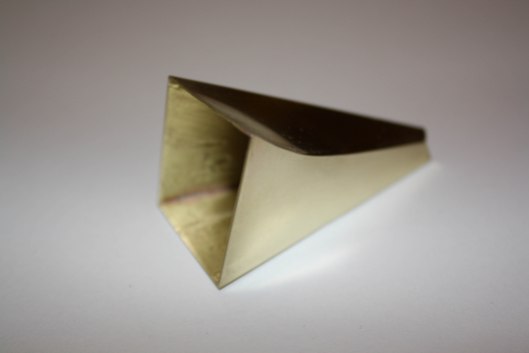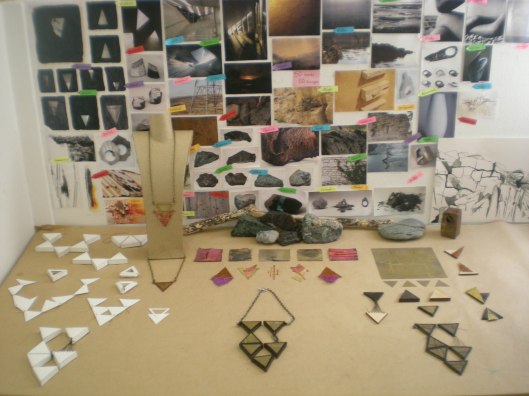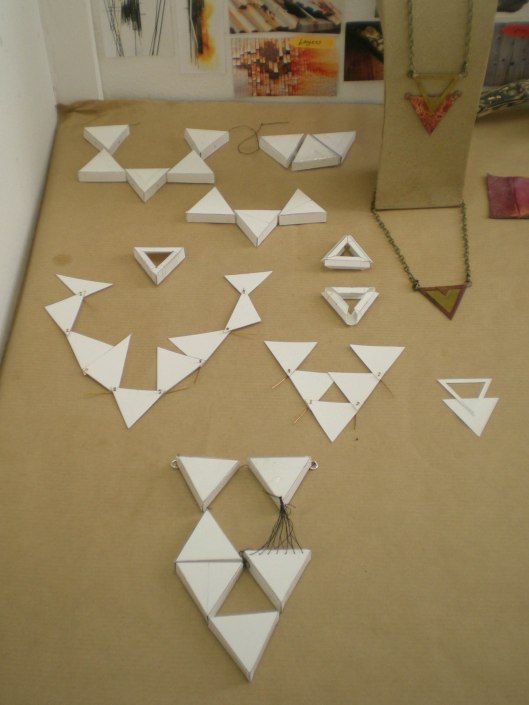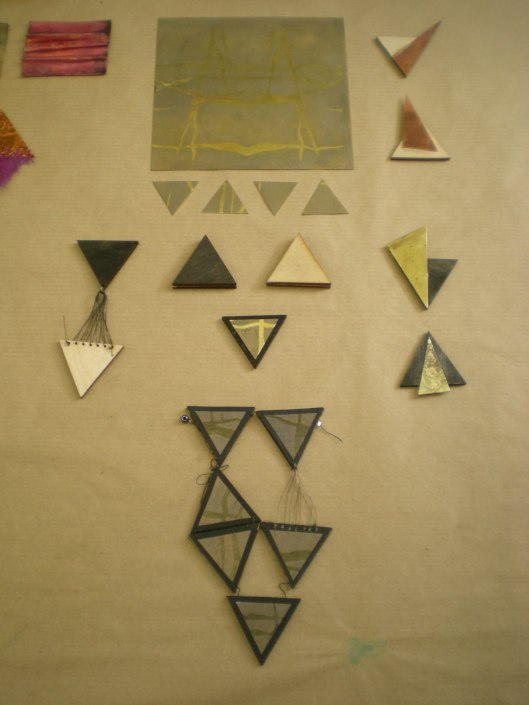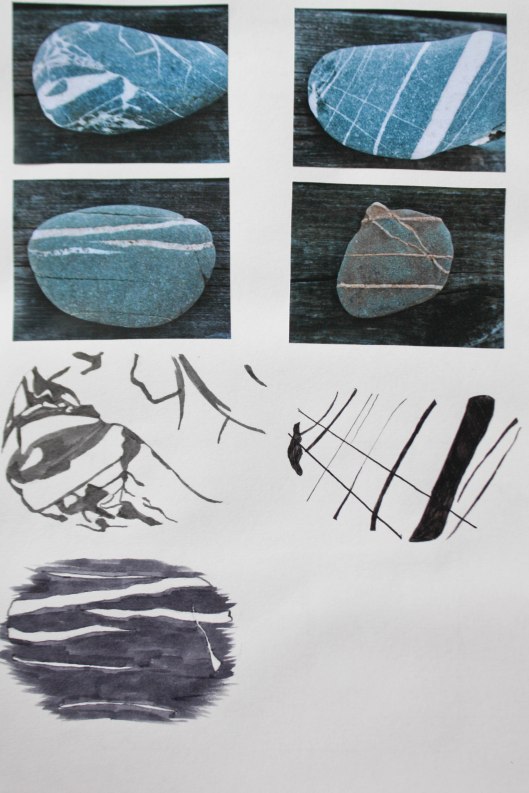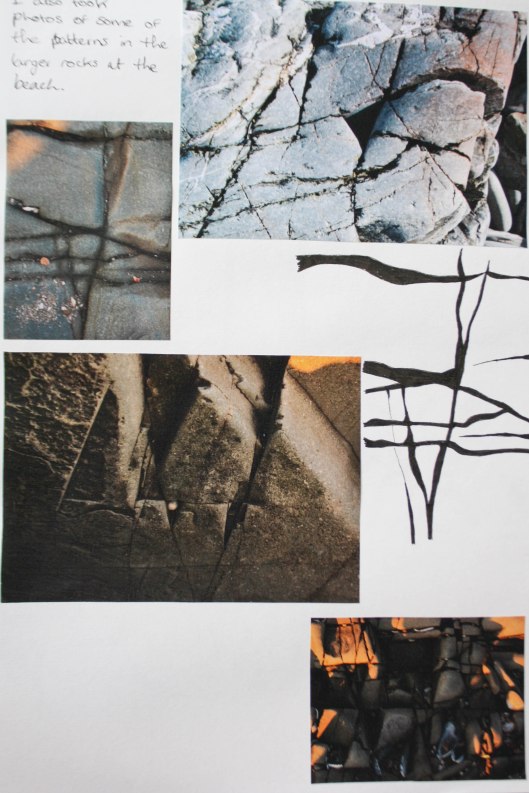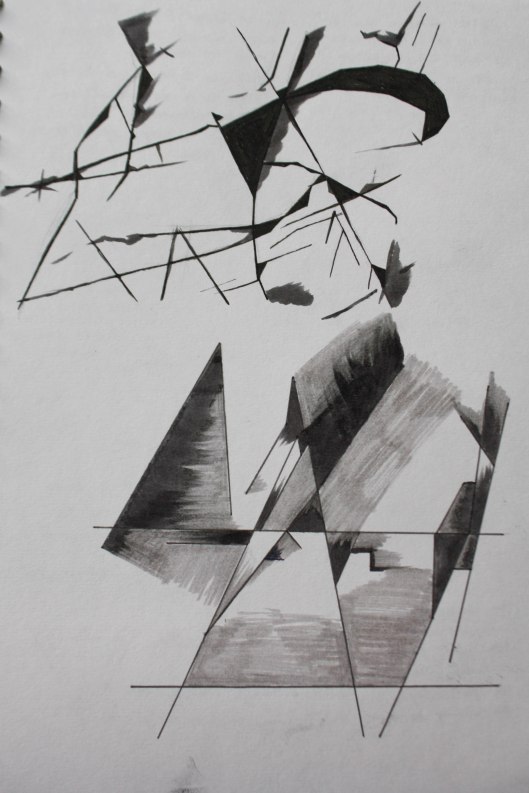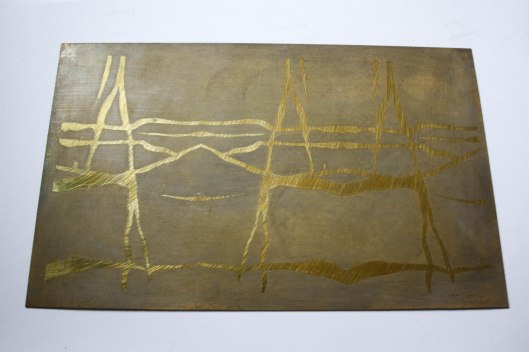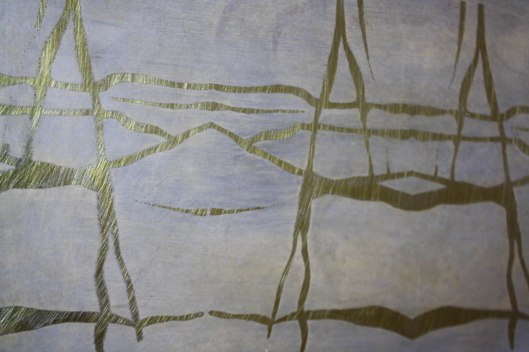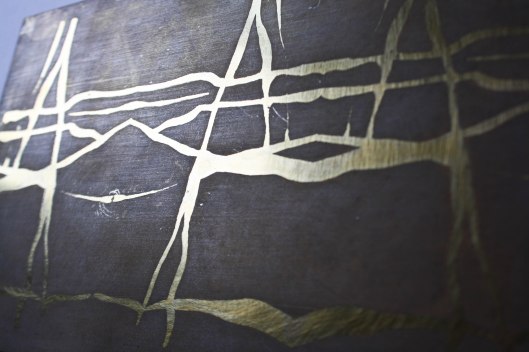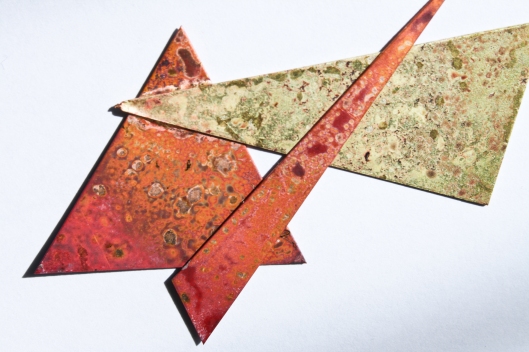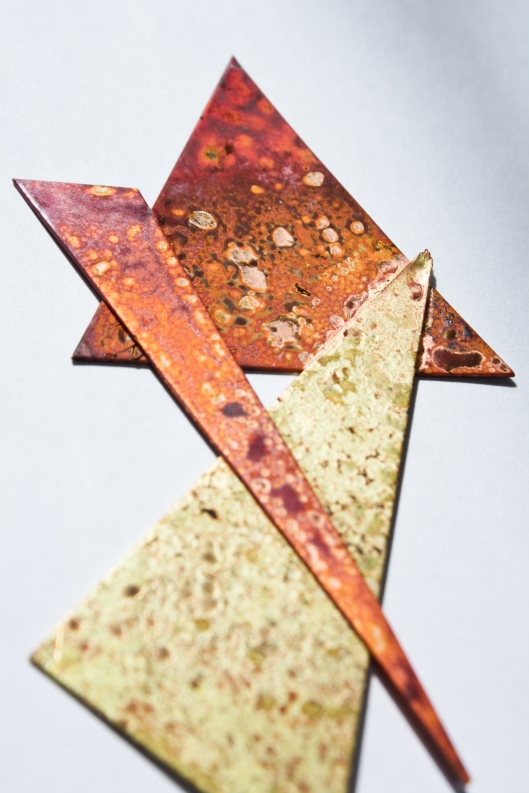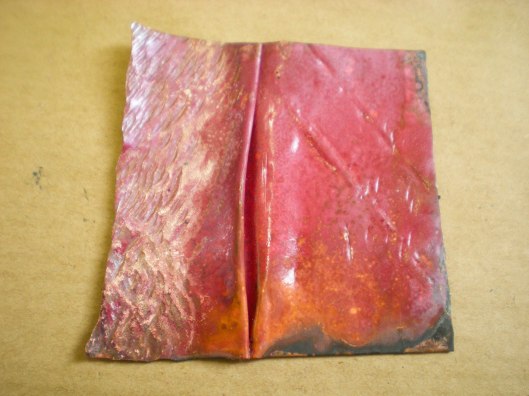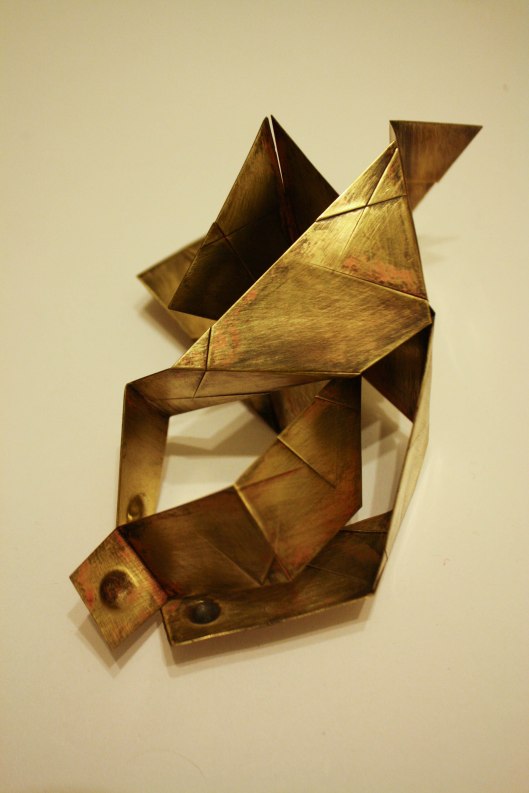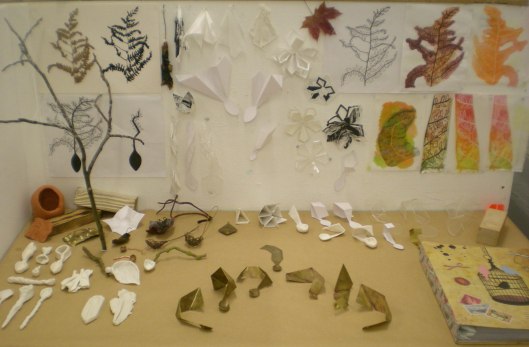This is the last post I am going to do on my metal folding project. In the end I did 70 samples all together. I’m just showing you the best and most interesting ones.
These examples include the last couple of techniques I used. They are more of the decorative kind than structural.
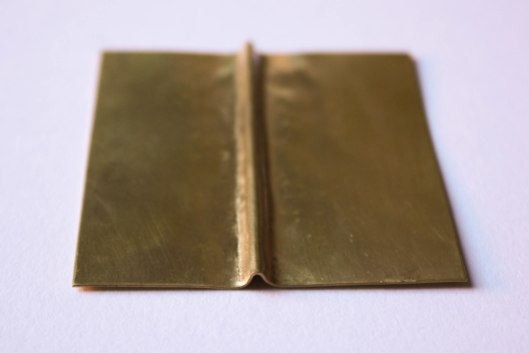
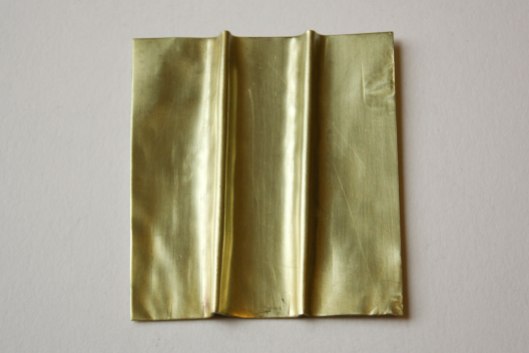
This next one was done using the fold forming technique where you fold the metal around a thin strip of metal, then feed it through the rolling mill multiple times till the whole thing is the same thickness. This causes the part with the metal strip to stretch and curve. When you unfold the metal it then has a curved raised fold through the centre.
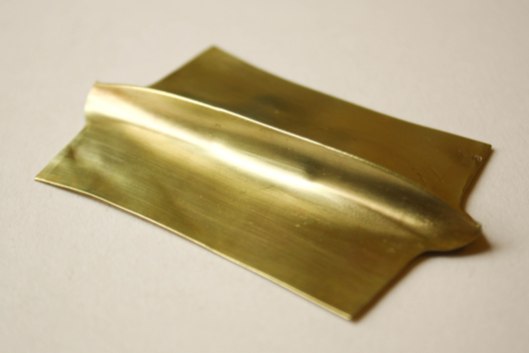 This was a very interesting technique to experiment with – I tried using different widths of metal for the strip inside as well as cutting the strip of at different points – however I am not sure I actually like this effect.
This was a very interesting technique to experiment with – I tried using different widths of metal for the strip inside as well as cutting the strip of at different points – however I am not sure I actually like this effect. This last technique is currently my favorite. It is called a pinched line fold. The metal is folded in half by hand and then hit just behind and then upon the fold in the centre with a hammer. This stretches and thins the metal at this point so that when the metal is unfolded there is a thin and gradual raised bit in the centre.
This last technique is currently my favorite. It is called a pinched line fold. The metal is folded in half by hand and then hit just behind and then upon the fold in the centre with a hammer. This stretches and thins the metal at this point so that when the metal is unfolded there is a thin and gradual raised bit in the centre.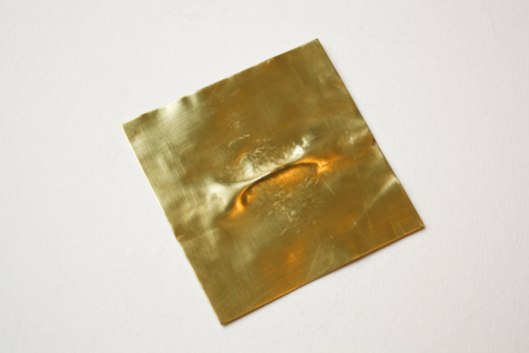
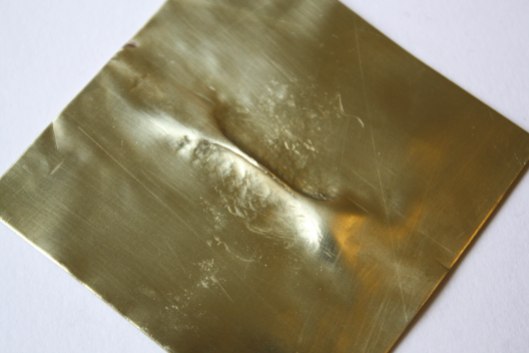
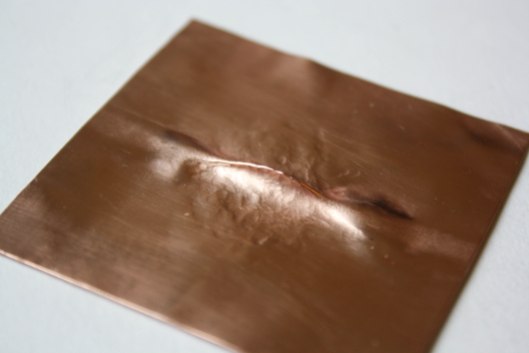 This technique produces a pinched and creased affect which is aesthetically interesting both front and back.
This technique produces a pinched and creased affect which is aesthetically interesting both front and back.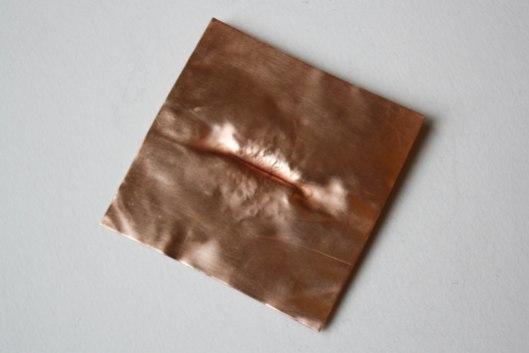 The most interesting thing about all of these techniques, as part of this project, is that they can’t be reproduced in paper – they are unique to metal.
The most interesting thing about all of these techniques, as part of this project, is that they can’t be reproduced in paper – they are unique to metal.
I hope to use the pinched line technique in my next project, I will be posting about it soon.

